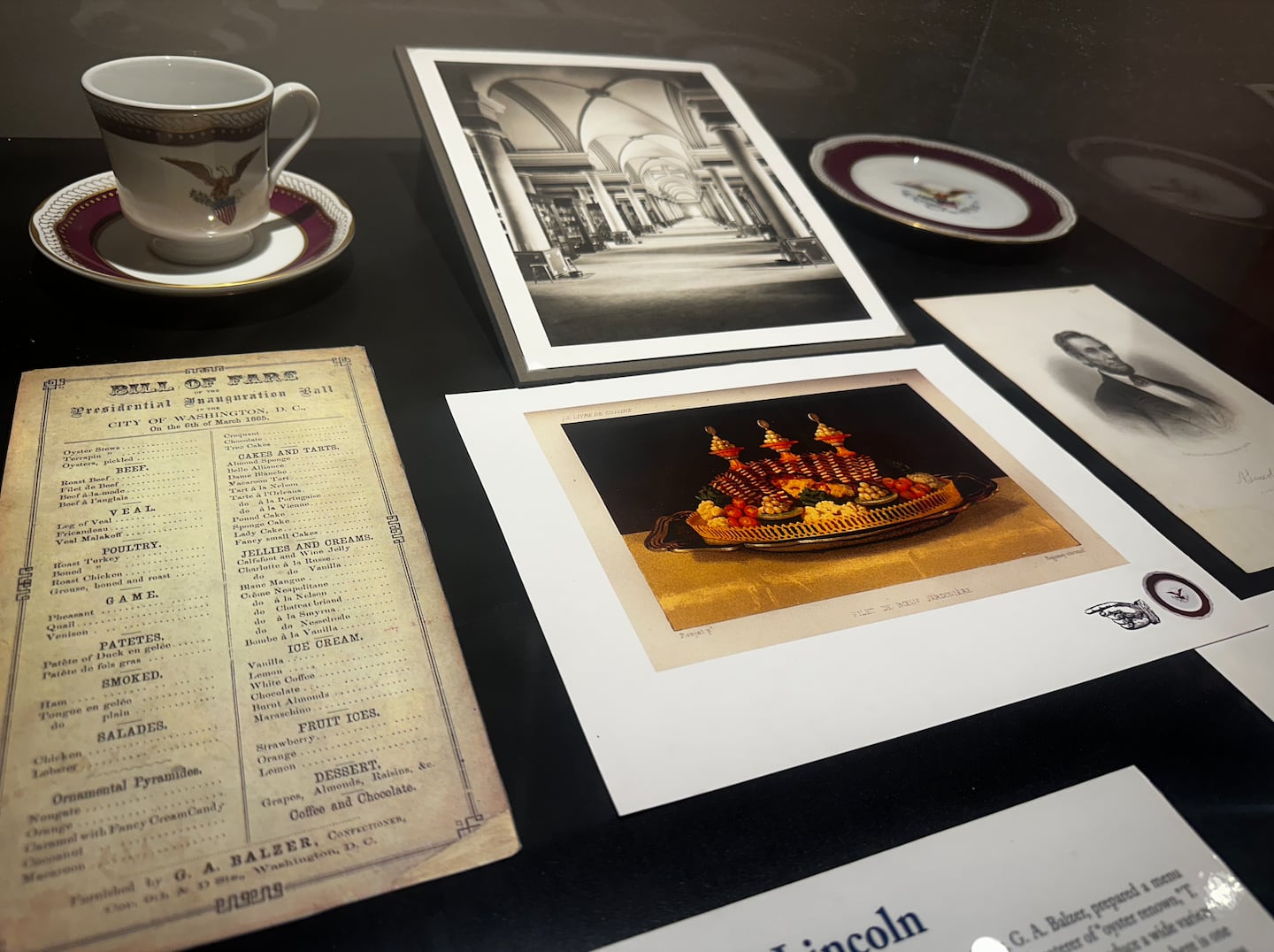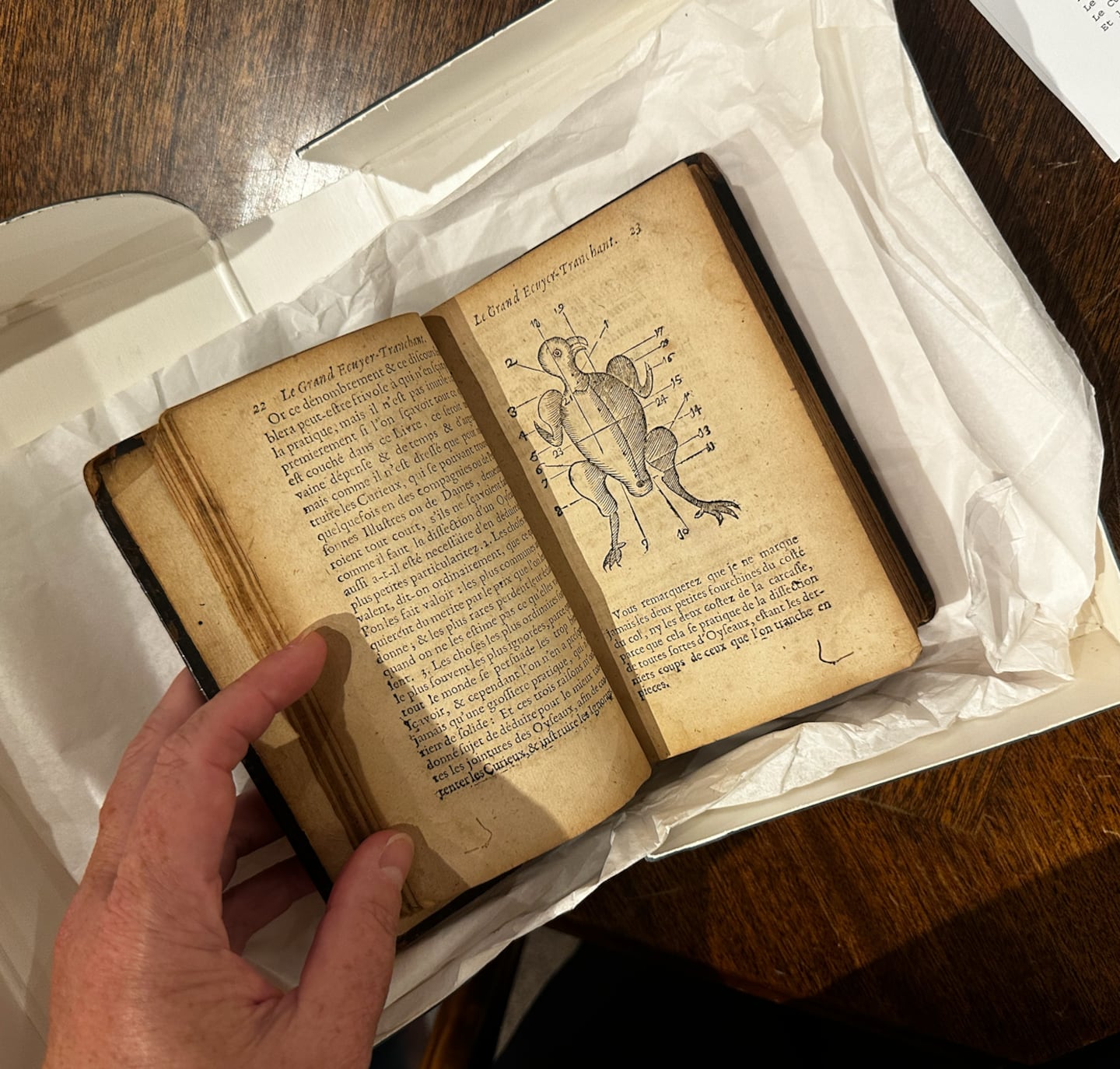PROVIDENCE — Hidden away on Johnson & Wales University’s campus is a treasure trove of culinary history that most New Englanders have never seen.
The Culinary Arts Museum, which has been closed to the public since 2017, isn’t just for chefs-in-training. It offers a peek into how food shaped culture, politics, and everyday life in America, and beyond. Among the more than 165,000 artifacts: handwritten recipe books from one of JFK’s favorite chefs, a French cookbook dating back to 1680, old bars from legendary restaurants in Manhattan, and menus that chart America’s evolving appetite over centuries.
The Museum is finally reopening to the public for a special two-day ticketed tour and tasting event on Oct. 30 and 31 as part of Rhode Island’s celebration of the nation’s 250th birthday. Curator Erin Williams, the museum’s only full-time employee, has been creating a special exhibit that displays cookbooks from all over Rhode Island going back 200 years. Tickets for the events are $25 each.
I’ve been lucky enough to explore the museum in recent years. Here are what I think are some of the most fascinating finds in the museum’s vaults.
CHEF ROGER FESSAGUET’S RECIPE COLLECTION AND RESERVATION BOOK
Roger Fessaguet, who was called the “Wizard of Haute Cuisine,” presided over La Caravelle, an elegant Manhattan restaurant in the 1960s and ‘70s that attracted celebrities with its classic French fare. The Duke and Duchess of Windsor dined there, as did Joseph P. Kennedy, president John F. Kennedy’s father. When JFK was elected president, he asked Fessaguet to recommend a French chef for the White House. Fessaguet recommended René Verdon, and went on to tutor him in his own kitchen for two weeks before sending him to Washington. He later named Kennedy’s favorite dish, poularde maison blanche, or “White House chicken.”
Fessaguet had kept a series of tiny notebooks with his recipes. His sauce recipe book is on display at the museum, opened to the page for Champagne sauce. Next to it is a menu from La Caravelle featuring the sauce, which is made from Champagne, diced onions, heavy cream, and a rich white sauce with mushrooms called velouté forestier. The recipe book is written in French.
Also as part of this showcase is Fessaguet’s reservation book from La Caravelle from 1960 to 1961. If you flip through its pages, you’ll find all sorts of notable guests, including the Kennedy family; Ed Stone, the architect of Radio City Music Hall; and Otto Preminger, a theater and film director.
For his second Inaugural Ball, with the end of the Civil War at hand, president Abraham Lincoln wanted to celebrate with both dignitaries and ordinary citizens. They planned for a feast, with a buffet table that was 250 feet long and had a replica of the US capital building as the centerpiece. Tickets cost $10 (which was entry for one man and two ladies).
When the dinner was announced, 4,000 partiers assembled and mobbed the table that was only meant for 300. “The flood of the supper room was soon sticky, pastry, and oily with wasted confections, mashed cake, and debits of fowl and meat,” according to one news report at the time.
The menu, which is on display at the Culinary Arts Museum, lists all sorts of meats and fish dishes from roast turkey to oyster stew, along with six different ice creams (including white coffee and maraschino), and cakes and tarts (like tart a la Nelson, pound cake, almond sponge, and macaroon tart).
 For his second Inaugural Ball, with the end of the Civil War at hand, president Abraham Lincoln wanted to celebrate with both dignitaries and ordinary citizens. To the left is the menu from that ball, which is on display at the Culinary Arts Museum at Johnson & Wales University in Providence, R.I.Alexa Gagosz
For his second Inaugural Ball, with the end of the Civil War at hand, president Abraham Lincoln wanted to celebrate with both dignitaries and ordinary citizens. To the left is the menu from that ball, which is on display at the Culinary Arts Museum at Johnson & Wales University in Providence, R.I.Alexa Gagosz
A COOKBOOK FROM THE 1600S
The oldest cookbook on display at the museum is “L’école Parfaite des Officiers de Bouche.” It’s a 17th-century cookbook attributed to Jean Ribou, a scholar and food critic. The book is intended to teach a variety of culinary skills, from basic cooking to baking and jam preparation, as well as the duties of a maître d’ and sommelier.
 “L’école Parfaite des Officiers de Bouche” is a 17th-century cookbook by to Jean Ribou, a scholar and food critic. This copy was printed in 1680 in France and is on display at the Culinary Arts Museum at Johnson & Wales University in Providence, RI.Alexa Gagosz
“L’école Parfaite des Officiers de Bouche” is a 17th-century cookbook by to Jean Ribou, a scholar and food critic. This copy was printed in 1680 in France and is on display at the Culinary Arts Museum at Johnson & Wales University in Providence, RI.Alexa Gagosz
Plenty of chefs have donated their chef’s coats to the museum to be put on display. Many of those chefs are graduates of Johnson & Wales, including celebrity chef Tyler Florence, chef Mark Ladner, local chef Derek Wagner of Nick’s on Broadway, and James Beard Award-winning chef Michelle Bernstein. Julia Child and Jacques Pépin, who are not alumni but have received honorary degrees from the university, also have jackets on display.
When you go, look closer at these displays and you might find that some of these chefs, including Bernstein, were once part of the Diplomatic Culinary Partnership. It’s unclear if that partnership still exists, but it was once part of the US Department of State and was used as a diplomatic tool to engage foreign dignitaries, bridge cultures, and strengthen relationships with other societies by embracing chefs from other cultures.
A painted chef’s coat honoring Julia Child on display at the Culinary Arts Museum at Johnson & Wales University in Providence, R.I.Alexa Gagosz
You’re reading The Food Club, the Globe’s free weekly email newsletter about the restaurant scene in New England, and beyond. Get it sent to your inbox.
Alexa Gagosz can be reached at alexa.gagosz@globe.com. Follow her @alexagagosz and on Instagram @AlexaGagosz.


Dining and Cooking